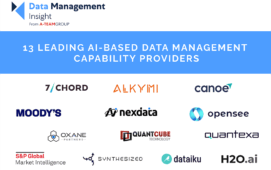Derivatives valuations software vendor SciComp has released a new version of its flagship SciFinance pricing software solution, which it claims will help quantitative developers shorten model development time and create models with faster execution speeds. Version 5.0 of the software has been altered to reflect the new market conditions and new OTC derivatives, says Curt Randall, executive vice president of the vendor.
“New OTC contracts or new market conditions require new pricing models, and our customers must respond by producing models rapidly, but with the attention to detail required for accurate results. SciFinance was developed to replace days or weeks of error prone hand coding and debugging; it automatically generates C or C++ pricing model source code in minutes,” claims Randall.
The current market requires expedited model development and faster execution speeds for derivatives pricing models, he explains. To account for this, SciFinance 5.0 features generation of parallel codes for Monte Carlo pricing models that run up to 30 to 200 times faster than serial code, according to the vendor. This acceleration is achieved by taking advantage of the highly parallel structure of high-end Nvidia graphical processing units (GPUs), adds Randall.
“Our customers can benefit immediately from SciFinance’s new ability to generate CUDA-enabled code. Without having to become experts in parallel coding, they can quickly create code that delivers up to 200X execution speed increases. A single PC equipped with several relatively inexpensive Nvidia GPU cards can replace many racks of blades with a single box, reducing physical footprint and energy consumption by large factors,” he elaborates.
The vendor will also be providing support for partial differential equation (PDE) models later this year with the addition of a more concise specification dialect in the form of SciXpress. This dialect shortens even the most complex pricing problems to a few dozen lines, claims the vendor.
SciFinance 5.0 also includes the ability to automatically create OpenMP parallel code for Monte Carlo pricing models. Nearly all modern desktop computers have multiple CPUs, usually from two to eight, while workstations may have many more. The synthesised parallel code is compliant with the OpenMP standard and with existing Windows and Unix compilers. It executes in the multi-processor environment with nearly linear speed-up, for example a factor of 3.9X on a quad-core PC or 22X on a 24 CPU workstation.
Subscribe to our newsletter




